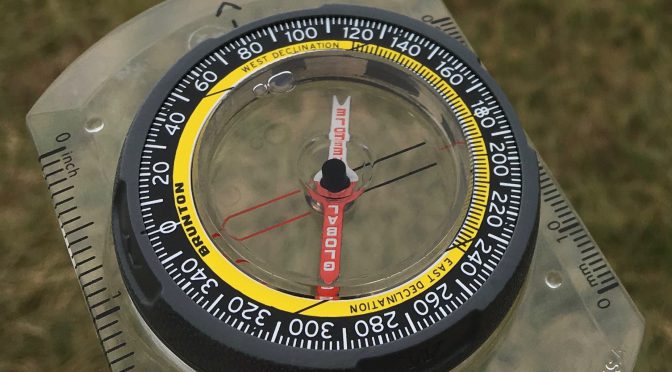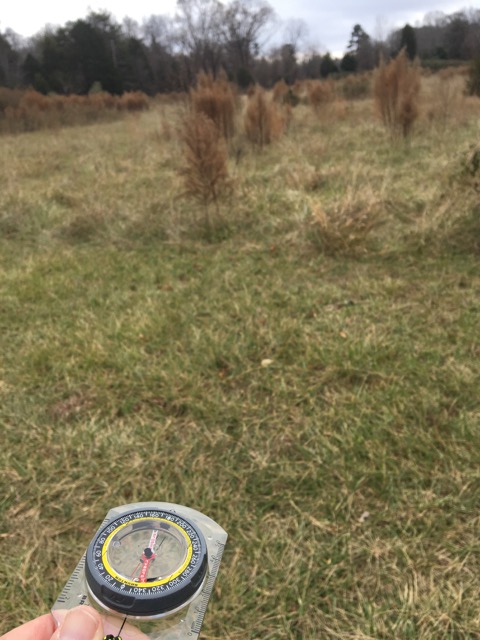This weekend GetBackpacking! pays a visit to the Wilson Creek area at the base of Grandfather Mountain. It’s a comparatively low-lying area but rugged, and acting as the drainage for massive Grandfather Mountain, it’s got water crossings galore. With our weekend trip in mind, and knowing a lot of you will be hiking along and in mountain creeks this summer, we’re rerunning this post on how to cross a stream.
Category Archives: Outdoor Skills
Don’t get lost, GetOriented!
There’s was one of the happy — if scary — endings. Too often lost hiker stories wind up like the case of the 66-year-old AT hiker who wandered off the trail to take a bathroom break and was never seen alive again. As friends and family of the hiker said later, she was an avid hiker with a poor sense of direction.
Not everyone is born with a well-honed internal compass. You don’t need to be, if you follow a few simple rules.
- Always take a map. Even the simplest handout map at the trailhead will give you a general sense of where the trail goes. (And if there isn’t a handout map, but there is map posted, take a picture with your smart phone.) Even better is a typo map, which gives you a sense of the terrain you’ll be covering. Even on a hike you’ve done a hundred times, take a map: you never know when you may need to abandon the trail — landslide, blowdown, bear with arms akimbo who refuses to move — and you need to take an alternate course.
- Always take a compass. If you’re on an open peak in the West on a sunny day, you can likely figure out north, south, east and west. Not so much the case in the heavily forested Southeast. If you get lost, a map is key to helping you get righted.
- Know your blazes. Likely, you’ll start out on an established trail. Familiarize yourself with the blaze for your trail and for adjoining trails. If you know you take the blue-blazed trail the whole way, and the trail is well blazed, you shouldn’t get distracted.
- Feel the trail. You’re hiking along and suddenly realize you don’t see any blazes. One of your first clues that you’ve lost the trail should come from your feet: is the ground not as compacted as it was? Are you sinking into the leaf litter? Retrace your steps until you feel firm ground, or see leafs that appear a bit more trampled.
- No blazes? Blaze frequency can vary from land agency to land agency. State parks, for the most part, spare no paint. National Forests, on the other hand, aren’t as generous. If you don’t see a blaze, stop and take a close look ahead. No blazes? Turn and take a careful look back at the direction you came from. If it feels like you may be off trail, retrace your steps until you spot a blaze.
- Avoid wandering off trail. If you aren’t equipped with a map and compass and the knowledge of how to use them (more about that below), resist the urge to chase after shiny things in the woods. (Squirrel!) The AT hiker mentioned above may have gotten lost in the tangled Maine woods, but it is so easy to wander just a few yards off some trails and have no clue how to regain it. Many trails have an indistinct profile when viewed from the side, blazes aren’t always readily visible, and it’s easy to miss the two-foot-wide hardtrack of a trail while crossing it.
- Take note of key landmarks. Take note of key landmarks as you hike: an unusual tree, a creek, a rock outcrop, whatever. This can be especially helpful if you lose the trail and are wandering around trying to find it: you may not immediately spot the trail itself, but you might a tree straight out of Halloween central casting.
Need more direction?
GetOriented! Finding Your Way in the Woods
Three years ago, we started our GetOriented! Finding Your Way in the Woods class. We spend about 30 minutes going over map and compass basics — nothing technical, just the essence of how a compass works, how a topographic map works, and how the two work together. Then we venture down the trail — and off trail — to put those skills to the test and learn more about reading the terrain and finding your way in the woods.
Here are our classes scheduled through May:
Charlotte
GetOriented! Finding Your Way in the Woods
You step into the woods to lose yourself mentally, but nobody wants to get lost for real. Even on a marked trail, it can be easy to lose track of where you are as your mind releases its stress. But, with the right tools, you can get yourself back on the path. Our Get Oriented! program provides you with just those tools.
With a map and compass, the knowledge of how to use them, and a basic understanding of topography, you can easily find your way back. These navigating skills give you the confidence to venture off trail on purpose and discover the hidden wonders and solitude that can be hard to find on a well-trod trail.
In our three-hour GetOriented! Finding Your Way in the Woods class, we go over basic map and compass skills, then head down the trail, and off, to show you how to read the woods and know exactly where you are, even if there isn’t a trail in sight.
We start with a 45-minute map-and-compass introduction, then use that map and compass — and some Daniel Boone skills — to find our way in the woods. We’ll do some off-trail exploring, with the goal of purposefully venturing off the trail, then rejoining it again. Our goal is to make you a confident hiker.
For upcoming course offerings, visit your local GetHiking! Meetup site:



